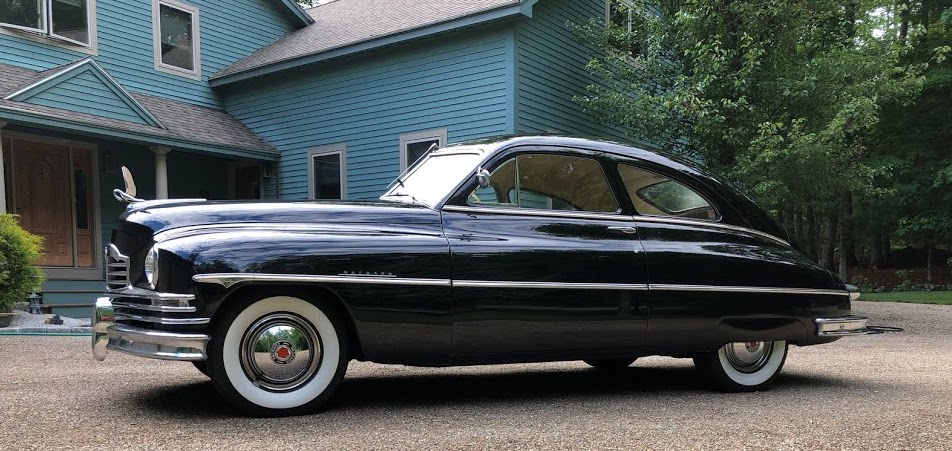
About
I never planned to be a “historian.” I was a Chemistry drop-out at Rensselaer Polytechnic Institute (1960), a fail-safe graduate of Wagner College (1963), a 120-day-wonder U.S. Coast Guard officer (1964-67), and a bored bureaucrat at the Pennsylvania Department of Health (1967-70). Chance sale of a car article landed me an editorship at Automobile Quarterly, then in its heyday. There, with the help of two brilliant editors, Don Vorderman and Beverly Kimes, I got into my bones the essentials of writing history. I left AQ to freelance in 1975 and have been, as my wife likes to remind me, unemployed ever since.
Sleepless in Harrisburg, I began collecting stamps and founded the Churchill Study Unit, to investigate Churchill commemorative postage, in 1968. Three years later it became the International Churchill Society, a broader organization for anyone interested (pro and con) in Winston Churchill, his life and times, and editing its quarterly, Finest Hour. I left the Society to others in the 1970s in single-minded pursuit of an obsession with old cars. I wrote, co-wrote or published 54 books and 2000 articles on automotive history—American, English and European, most of them “potboilers,” but a few have stood the test of time: Kaiser-Frazer: Last Onslaught on Detroit, Triumph Cars, The Studebaker Century, The Encyclopedia of American Cars, The Complete Book of Collectible Cars, GM: 100 Years, and Packard: A History of the Motorcar and the Company.
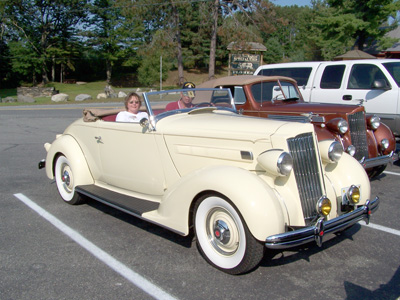
For me, Packard built the grandest cars in America. I had the honor to serve as editor of The Packard Cormorant from 1975 through 2001, and have been a trustee of the Packard Motorcar Foundation since 2003. I was betimes editor of The Milestone Car, The Vintage Triumph and Car Classics magazines, and sampled about forty collector cars. For eight years I owned a wonderful 1936 Packard One Twenty convertible named “Gatsby,” now in Germany.
With part of the proceeds I bought a body-off restoration, a 1953 Studebaker Commander Starliner with stick overdrive, which gives us longer legs on the interstates to attend old car tours well away from home. The Starliner was designed for Raymond Loewy by my old friend Bob Bourke, who is no longer with us. I wish he could to see this beautiful car, the high point, I believe, of American production styling in the 1950s:
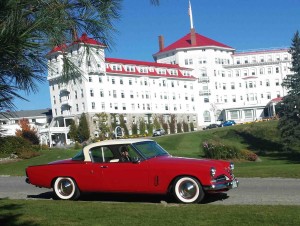
In 1981 the doorbell rang and Winston Churchill was standing there (figuratively). I had dug out an old box of stamps and picked up his wonderful autobiography, My Early Life: exaggerated, egotistical and not quite accurate, but in Harold Nicolson’s words, “like a beaker of champagne.” I revived the Churchill Society, moribund since 1975, and produced a new issue of its journal Finest Hour. Little did I imagine that by this small club would morph into an institution dedicated “to fostering leadership, statesmanship, vision and boldness among democratic and freedom-loving peoples through the thoughts, words, works and deeds of Winston Spencer Churchill,” or that Finest Hour would grow to 64 pages, or that I would survive 140 quarterly deadlines.
Along the way I began collecting Churchill’s books and, because I couldn’t get enough, was a Churchill specialist bookseller from 1982 to 2004, when I sold the business to Chartwell Booksellers in New York City. I published an American edition of Churchill’s rare 1931 book, India (1991), A Connoisseur’s Guide to the Books of Sir Winston Churchill (1998) and five books of quotations, Winston Churchill by Himself (2008), The Definitive Wit of Winston Churchill (2009). The Patriot’s Churchill (2010), All Will Be Well: Good Advice from Winston Churchill (2011), and Churchill in His Own Words (2012). I am now writing what I hope will be the first of several “Kindle Singles” on special aspects of the Churchill saga.
Retiring as editor of Finest Hour after the Autumn 2014 edition, I joined Hillsdale College, publishers of Sir Winston’s Official Biography, as a Senior Fellow for the Churchill Project. It was a delight to join my old friend, Hillsdale President Larry Arnn, where Winston Churchill has a good and permanent home. Together with many bright young people—I call them the A-team—we are planning new, exciting educational programs on Churchill’s life and philosophy, reaching thousands through seminars, conferences, online courses, web events, and streaming video. Click here for more details and go to “Appearances” for upcoming events.
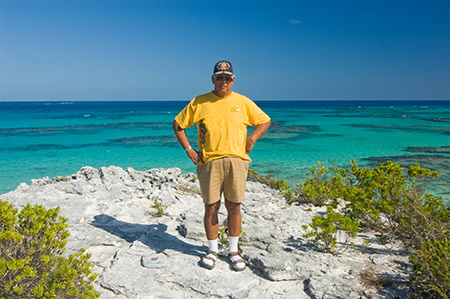
And now for something completely different. In 2003 we built a house on Eleuthera, Bahamas, which we’ve loved since we landed there in 1981, where Barbara and I now spend four months a year, writing, playing, and editing our local property owners association newsletter, The Rainbow Times.
In 1998 Her Majesty the Queen saw fit to reward me with a CBE (Commander of the Most Excellent Order of the British Empire), “for services to Anglo-American understanding and the memory of Sir Winston Churchill.” What does one say to such an honor? Only Churchill’s words when he received the Nobel Prize for Literature in 1953: “I am proud, but also I must admit, awestruck at your decision to include me. I do hope you are right. I feel we are both running a considerable risk and that I do not deserve it. But I shall have no misgivings if you have none.”
It has been an honor—and certainly the only likely credit on my crematory urn—to devote a career to Winston Churchill, the Washington or Lincoln of his century; to rise above the trivial and the legendary, above the frothy soap opera picture, above the memorabilia, above even the blood, toil, tears and sweat; to defend his reputation from carpers and cranks; to show that warts and all, Churchill was one of a kind—a politician who not only talked, but thought—not just the person of a century, but of a millennium.
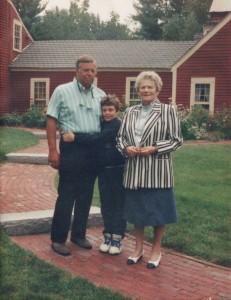
Churchill wrote of the culminating event of his life, the night he became Prime Minister, 10 May 1940: “I thought I knew a good deal about it all, and was sure I should not fail.” Well, that is what this website is about: an opportunity to share what I know; to answer questions; to set the record right (and Churchill was not always right); to poke curiously into obscure corners of history; to learn more myself—and to communicate with Churchilllians, car nuts, Bahamian adventurers, an eclectic mix—but I do know a good deal about it all.
We once referred to the seven (count ’em) people who subscribed to both my Churchill and Packard magazines as “The Sainted Seven Subscribers.” And that is what you are: a Sainted Web-Browser, for having landed here at richardlangworth.com. I hope the visit will reward you in some pleasant or useful way.
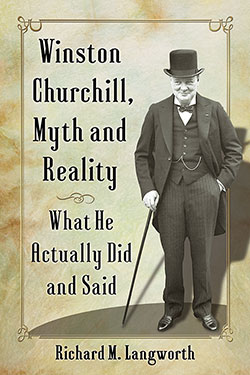
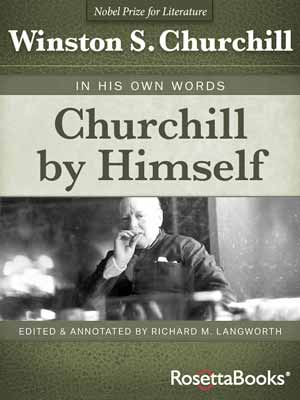
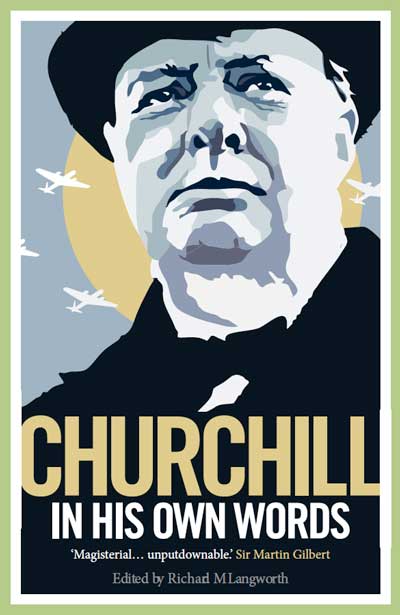
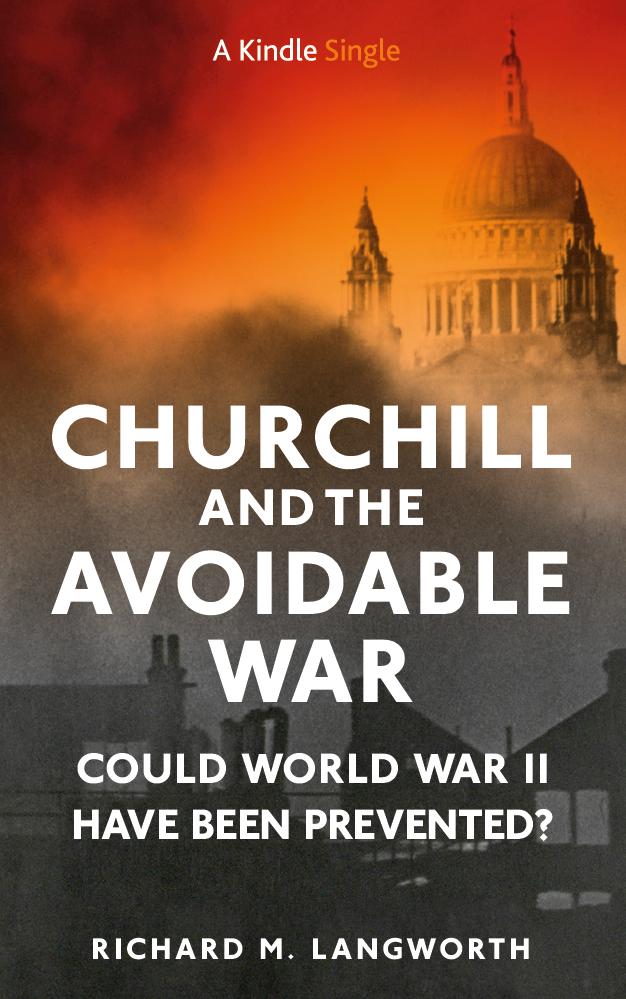
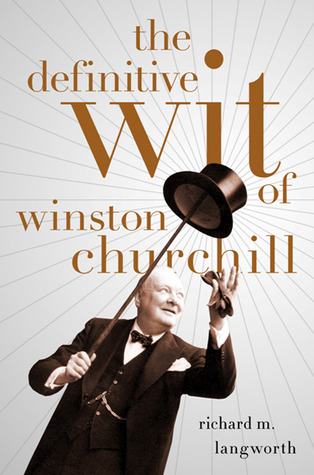
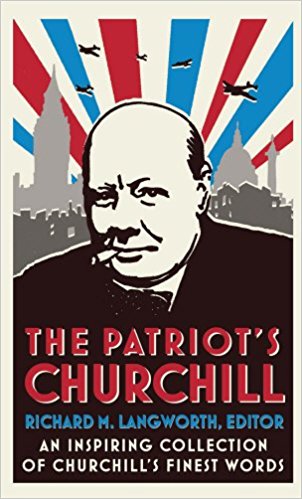
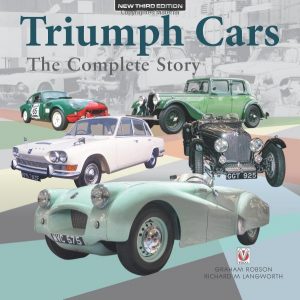
Hu Richard, I hope you and Barbara are doing well. I just saw about a movie that will play in Dedham next week, “Widow Cliquot” (I think that’s spelled wrong, but you get the point), widowed at 27. The movie is about her starting Veuve Cliquot. It is a French film, so will have limited distribution, but you might like to know. All my best, Fred
When Field Marshal Montgomery visited Moscow in 1947 Stalin took the opportunity to give Monty a message for Churchill saying that he had the happiest memories of working with Britain’s great war leader. Churchill responded: “I always look back on our comradeship together, when so much was at stake, and you can always count on me where the safety of Russia and the fame of its armies are concerned….Your life is not only precious to your country, which you saved, but to the friendship between Soviet Russia and the English-speaking world.” —Geoffrey Roberts, Emeritus Professor of History at University College Cork, Ireland. His book, co-authored by Martin Folly and the Oleg Rzheshevsky, is entitled Churchill and Stalin: Comrades-in-Arms during the Second World War.
–
Response: I am surprised that good historians would bowdlerize what Churchill actually wrote to Stalin. From Martin Gilbert, Winston S. Churchill, vol. 8, 309-10.
I’m not sure what the point is, but in both what he actually wrote, and what he deleted, there is no inconsistency in Churchill’s thought. A year earlier at Fulton, in a speech Stalin denounced as war-mongering, he said:
Churchill was always in favor of reaching what he called an “understanding” with the Soviets—a status pundits later referred to as “peaceful coexistence”; what he resisted was proselytizing Marxism, spread by force.
I seek information relative to a 1965 Dodge Dart Charger, produced in very small quantity in Los Angeles. The LA Public Library suggested your book Chrysler and Imperial 1946-1975. I write to ask if it, any others of your books, or you yourself might have information about my vehicle. Thank you very much for your time and any help you may provide to me.
–
Diane- Not sure why they’d recommend that book because it’s about Chrysler and Imperial. I did write the Illustrated Dodge Buyer’s Guide but completely missed that model—they apparently made only 180. However, a Duckduckgo search provides two references of interest:
Hot Cars
Hemmings Classic Car
The Hemmings article mentions the cover story for Collectible Automobile, April 2016. I write for Collectible Automobile, and attach the value guide for April 2016. We set $45,000 as the high price, but the market has subsided somewhat since. Classic.com records several auction sales, none above $30,000.
The April 2016 back issue is still available but marked “low inventory.” An order form and 800 number can be downloaded here. Hope his helps. RML
Dear Richard,
I too stumbled upon your website and I must thank you for your refreshing updates on what is quickly becoming a confused and biased history of Britain’s presence in the Middle East pre-, during and post-WW1.That Britain was in the region for 300 years by the time WW1 started is rarely noted nor the millions of British taxpayers’ money, which, postwar, they could ill afford, spent on (re)building an impoverished Iraq with no return. The British Civil Administration knew from its arrival in Baghdad in 1917 that an Arab government had to rule Iraq. Add to that the cruel natural environment of Iraq which killed off many of the British including General Maude and Gertrude Bell (I don’t agree with the suicide verdict) and the “forgotten” periodic rebellions recorded way back in travelogues of the nineteenth century, a revision of history is sorely needed before the cancel culture has its way. Thank you for your great information.
–
Dear Alison,
I presume you refer to “Avaricious Imperialists of Nation Builders.” Thanks for the very kind words, always hard to come by, and the sentiments, which I share. Churchill might have been on to somethinng when he coined the name for Britain’s involvement in Iraq: “Messpot.” Thanks for taking the time to write. —R
I stumbled on your website due to an interest in James Bond and the cars of the books. But I was truly pleased that it is the website of my favorite author. In ye olden days pre-Internet, I avidly poured over books on topics that interested me, and I essentially memorized “Collectible Cars 1940 to 1980.” It remains a classic and definitive tome, and made me familiar with almost every interesting American or Import car during that period prior reading current car magazines. I am only glad I have this opportunity to thank you for the knowledge that you have shared over the years regarding passion for great automobiles and interesting cars.Thanks.
–
Phil, thanks for those incredibly kind and generous words, which are the best pay I get. When Graham Robson and I put that book together we cast a very wide net, including (unbelievably to the editors) the Humber Super Snipe and Imperial. Our colleague Michael Sedgwick congratulated us for mentioning “the only cars that gave me mal de mere on a twisty bit of B-road.” In later editions they took the Snipe out. They forgot that there is Safety in Humbers. Thanks again. -RML
Sorry, no. Googling around the only X4s I found were a recent BMW prototype and a weapon for a 90s Sony Play-Station.
In 1982, I was at the marina in Milwaukee waxing my 1974 GTO. An older man with a very interesting car pulled in. My car was nothing in comparison to his. It was hand-formed, with a wing on the back and a nameplate-X4, the fourth in a series of experimental cars. If I recall, the man mentioned Brooks Stevens. Do you have any information about the X4?
I cannot, unfortunately (not clear on Cornbury Park or Ascott under Wychwood, though they’re only four miles apart). The best place to find some related documents would be the Churchill Archives Centre. I was honored to know the 11th Duke, a great gentleman.
It’s said that Churchill kept his polo ponies on Cornbury Park Estate after tiff with his cousin the 9th Duke of Marlborough, who then asked WSC to remove them from Blenheim. The ponies were in stables and WSC occupied the hunting lodge adjoining, where we now live. My book, A Spencer Love Affair (foreword by late Duke of Marlborough), is primarily on Blenheim in the 18th century and the 4th Duke. If you are able to verify re WSC and his polos in Ascott under Wychwood would love to know.
I hope you mean $4.25. Sorry, that’s the American novelist Winston Churchill. See “Winston Churchill—American Novelist.”
I have a Churchill book, I believe a first edition. It is called A Far Country and it’s a brown hardback. I found it on Amazon for 425. Interested?
Sean, that’s truly an amazing coincidence. I will have to post a pic of my Starliner, which replaced my Packard. Wow, quite a risk to have one of those rusters down here! I wrote about the Carrera over the years–would like to see your car! Jonathan will tell you where to find me.
Small world indeed! I’m a Bahamian living in Nassau but intent on buying a second home in Eleuthera (drawn to Rainbow Bay which Jonathon Morris has taken me round several times to look at various properties) and my most prized toy – get this – is a 1953 Studebaker Commander Starlight ex Carrera Panamericana (heavily modified (with NASCAR spec engine) for that event which it competed in twice in 2000 and 2003 with the previous owners). I took it down to Eleuthera last year as part of the Bahamas Antique Auto Club’s contingent to the Ali Antique Car Show in Hatchet Bay. Had a great time. Delighted to come across your website.
Congratulations on your many fine achievements
Hopefully I will get to meet you one of these days. Sean
This page is now at the top of my favorites. What a great read!
We share a common interest: Eleuthera
Enjoyed reading some of your blog, especially about the fishing lake. Missed that point of interest and will have to be sure to check it out on my next visit.
Thanks for sharing the information.
pj
Richard,
I’m pleased to catch up on your life since we last corresponded.
I was a member of the ICS during your editorship of Finest Hour, a sometime customer of your bookstore, and a person who has purchased at least two of your Churchill books. You once gave me some advice about selling a set of official biography companion volumes to another bookseller (who shall remain nameless), that were spot on.
I love old cars and have a large collection of books about them, somehow I’ve avoided yours, but my interests are mainly of foreign cars. Furthermore I’m suprised to learn that, like me you actually have a background in public health, though you gave it up for more interesting pursuits, alas, I lack your talents in writing: I think.
I qualify my statement because I’m now researching a biography of my grandfather, who was a Texas Ranger and marshal in far west Texas 1916-1920. It might not be very good but I know it will be read by his numerous descendants.
My best wishes to you and your lovely wife.
Monty Waters
I am pleased to subscribe to The Churchill Centre And Museum… and I have linked your review of the fascinating and superb film — The Gathering Storm — on my weblog piece with the same title.